
by Pete Peterson | Feb 23, 2017 | Living Your Yoga |
In one of my earlier articles, I wrote about the Yamas and Niyamas, yoga philosophy’s moral underpinings from the Sutra of Patanjali. This article will focus on one of the Niyamas (personal observences), Saucha, sometimes translated as purification or cleanliness.
Donna Farhi writes in Yoga Mind, Body, & Spirit:
“Practicing saucha, meaning “that and nothing else,” involves making choices about what you want and don’t want in your life. Far from self-deprivation or dry piety, the practice of saucha allows you to experience life more vividly. A clean plate enjoys the sweetness of an apple and the taste of pure water; a clear mind can appreciate the beauty of poetry and the wisdom imparted in a story; a polished table reveals the deep grain of the wood. This practice both generates beauty and allows us to appreciate it in all its many forms.”
Many people think of purification as having to be, well, pure. This may be one of your aims in life. Clean eating, or only eating organic and local food is a great way to bring in the essence of purity or saucha into your body. Considering the kinds of people you surround yourself with, the types of entertainment you watch, hear, and participate in is another way to bring in the quality of Saucha. Yet, if you are reading this and thinking that you aren’t cut out for going all the way to the monastery yet with this Niyama, consider perhaps the baby steps that may be doable for you.
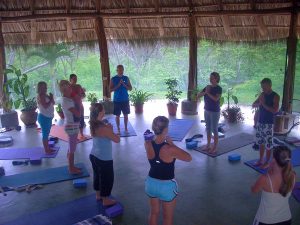 In yoga studios, there are often guidelines which embody this Niyama, asking students to come to class clean, without any strong odors, even from perfumes, colognes, or lotions. This beginning step towards Saucha ensures that everyone can enjoy the class environment (especially the deep breathing). This is done for common courtesy, yet can also be one way to understand the intent of Saucha and to remember this as you shower or get prepared for your practice. You may also consider for yourself how you can take the spirit of Saucha in your mind as you step onto your mat, allowing yourself to try to stay absorbed in the intent of your practice, rather than thinking of the list of things you want to do after your practice.
In yoga studios, there are often guidelines which embody this Niyama, asking students to come to class clean, without any strong odors, even from perfumes, colognes, or lotions. This beginning step towards Saucha ensures that everyone can enjoy the class environment (especially the deep breathing). This is done for common courtesy, yet can also be one way to understand the intent of Saucha and to remember this as you shower or get prepared for your practice. You may also consider for yourself how you can take the spirit of Saucha in your mind as you step onto your mat, allowing yourself to try to stay absorbed in the intent of your practice, rather than thinking of the list of things you want to do after your practice.
As a teacher, I also look at the how the physical environment of the room itself can help set up an atmosphere of orderliness and clean energy flow. If mats are set up facing different ways, not in either lines or a circle, I have observed students being more distracted, and often less able to keep their energy and focus within what we as a group are doing. I typically will ask students to set up their mats in an organized circle. This allows for the energy of the room to flow evenly around all of us, and also seems to contribute to a feeling of everyone working in harmony during the class.
In your home practice, look at how you can arrange your mat in a place that is clean and orderly, and in harmony with your surroundings. It is also good to keep your mat itself clean. See how you may feel differently in your home practice if you first take a couple minutes to assure that your space is tidied up. This actually is as much a ritual for me at the beginning of my practice as setting out my mat! I find myself much “clearer” in my mind when I am not looking at my dog’s hair on the floor.
I also teach beginning students to be mindful as they walk to the closet for props or go to the wall. They learn to walk around others mats, thus keeping their feet off of another’s mat, as well as respecting the energetic “space” of another student. I do even try to encourage students to put away their props and mats at the end of the class neatly. I suggest that you also do this in your home when you practice there. Perhaps respecting your practice equipment and environment will transfer to awareness and respect of your surroundings in the rest of your day.
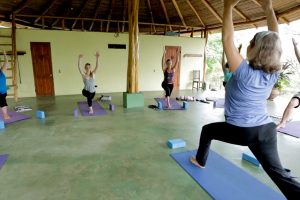 As we do in class, you can also separate your yoga practice from the rest of your day, thus keeping your practice “clean”. We do this through chanting the sacred word “Om” to begin and saying “Namaste” at the end. Finding your opening and closing rituals for your home practice can have the same impact, whether it be through lighting incense, candles, or even reading an inspirational passage before you begin. You can also find meaningful ways that work for you to close your practice, whether it be through bowing in gratitude to your inner teacher or in simply sitting in silence for a moment to allow yourself to transition off of your mat.
As we do in class, you can also separate your yoga practice from the rest of your day, thus keeping your practice “clean”. We do this through chanting the sacred word “Om” to begin and saying “Namaste” at the end. Finding your opening and closing rituals for your home practice can have the same impact, whether it be through lighting incense, candles, or even reading an inspirational passage before you begin. You can also find meaningful ways that work for you to close your practice, whether it be through bowing in gratitude to your inner teacher or in simply sitting in silence for a moment to allow yourself to transition off of your mat.
I have found that through the years my working consistently with these simple approaches has helped me to clean up a lot more things in my life. I now recognize when my shelves of clothes are getting disordered and love how it feels when I go through them, donate what I don’t use, and make them neat once more. I recognize when I am holding onto so many objects that it is tough to keep my home area clean. It has gradually transformed the way I eat much of the time, though I do still enjoy things like pizza and French fries every once in a while! I embody Saucha in the ways that feel right for me, without feeling that I am denying myself things that I love and enjoy. I hope that you can find your path to this as well.

Namastè,
Mary

by Pete Peterson | Feb 23, 2017 | Meditation & Breathwork |
In Patanjalii’s Yoga Sutras, the 8 limbs include Pratyahara (withdrawing the senses), Dharana (intense focus), and Dhyana (meditation, or the uninterrupted awareness). Each of these limbs is in essence some form of meditation. Meditation therefore is often a part of a daily yoga practice, along with the physical postures and breathing exercises.
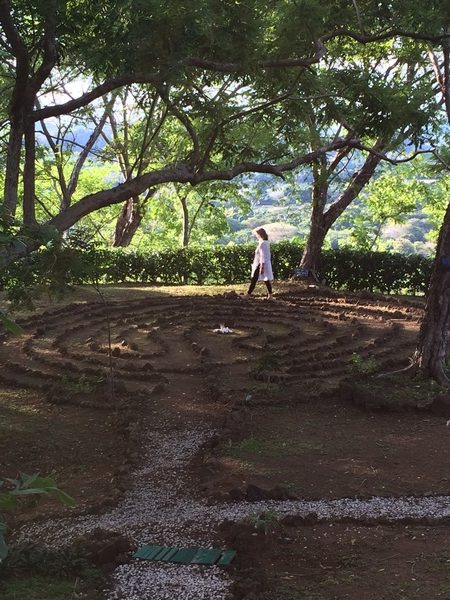
The number of ways and types of meditation is just as great as the number and ways of doing yoga poses. In this post I’ll explore one way to incorporate meditation into your day. This approach is called mindfulness meditation. Within this form you do things in a meditative or mindful manner, paying attention to whatever you are doing in that moment. I ran across an excellent explanation of this in a book (The Miracle of Mindfulness, 1975) by Thich Nhat Hanh.
“I usually wash the dishes after we’ve finished the evening meal, before sitting down and drinking tea with everyone else. One night, Jim asked if he might do the dishes. I said, ‘Go ahead, but if you wash the dishes you must know the way to wash them.’ Jim replied, ‘Come one, you think I don’t know how to wash the dishes?’ I answered, ‘There are two ways to wash the dishes. The first is to wash the dishes in order to have clean dishes and the second is to wash the dishes in order to wash the dishes.’…
“If while washing dishes, we think only of the cup of tea that awaits us, thus hurrying to get the dishes out of the way as if they were a nuisance, then we are not ‘washing the dishes to wash the dishes.’ What’s more, we are not alive during the time we are washing the dishes. In fact we are completely incapable of realizing the miracle of life while standing at the sink. If we can’t wash the dishes, the chances are we won’t be able to drink our tea either. While drinking the cup of tea, we will only be thinking of other things, barely aware of the cup in our hands. Thus we are sucked away into the future – and we are incapable of actually living one minute of life.” (p. 4-5).
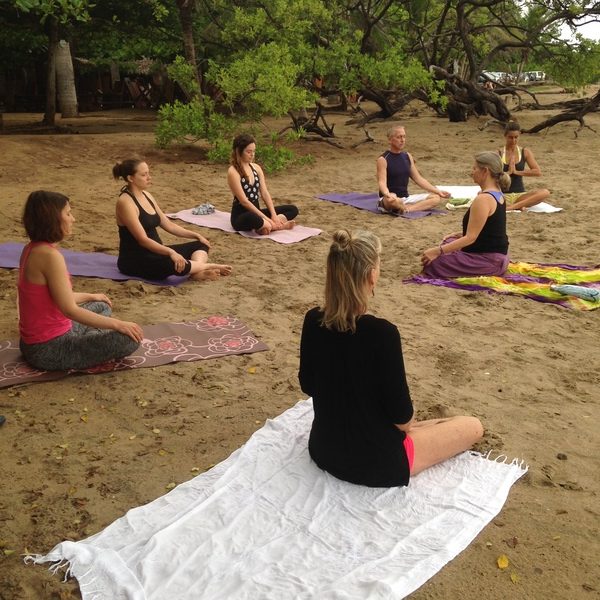
The reason to practice mindfulness in your life is just as these paragraphs explain – to actually live the minutes of your life. Have you ever wondered where a day went? It may be that you could enjoy more, and feel less like life is slipping by practicing paying attention. Try to bring mindfulness into something each day, be it brushing your teeth, getting dressed, or even washing your dishes. See if the being present during that one activity starts to bring more mindfulness to other areas of your life as well.

Namaste,
Mary
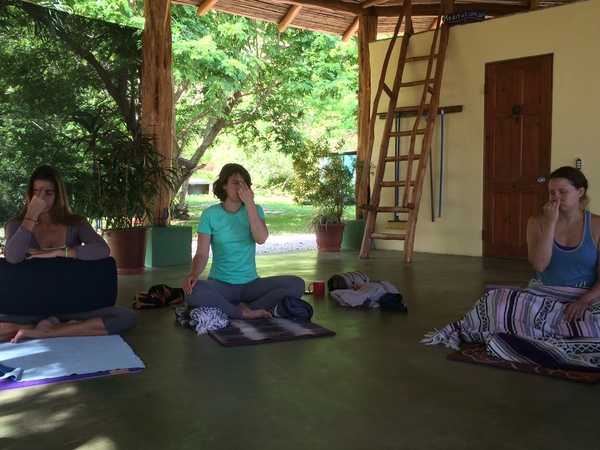
by Pete Peterson | Feb 23, 2017 | Meditation & Breathwork |
A couple years ago, I spent an incredible month in Bali, adding to my yoga teacher tools. Imagine if you will, spending all day for a month practicing and absorbing teachings of yoga – it was amazing. Plus being in the spiritual center of Bali, Ubud, where each day the sights and sounds of their deep honoring of deities and nature abounded.
What did I come back with? A further commitment and deepening of my own practice, along with more ways to share the ancient art and science of yoga with others. I had particularly chosen the course I did for its emphasis on the breathing practices of yoga, called pranayama, as well as for the advanced meditation techniques. There are a large number of techniques for working with the breath in the yogic tradition, for many different purposes. In looking at what techniques are most generally useful, one clearly stands out. Nadi Shodhana Pranayama, or alternate nostril breathing can be helpful for almost anyone. Looking at the words of Sanskrit: Nadi = subtle energy channel; shodhan = cleansing or purification; and pranayama = breathing extending or breath controlling practice or technique.
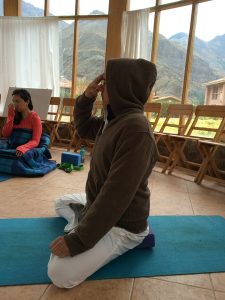 Doing this practice, even if only for a few minutes can help you feel calmer and release accumulated tension and fatigue. The mind is typically calmer after a few minutes of this practice and your breathing tends to deepen, which can also help move the nervous system from the “fight or flight” response. If you have any stress in your life, you can benefit from this practice. While there are other energetic benefits (the cleansing of the Ida and Pingala nadis), the feeling of calmness and clarity is what most people notice and appreciate. The nice thing is that you can do this technique without any equipment or special clothing! You just need to have a quiet place and a few minutes to yourself.
Doing this practice, even if only for a few minutes can help you feel calmer and release accumulated tension and fatigue. The mind is typically calmer after a few minutes of this practice and your breathing tends to deepen, which can also help move the nervous system from the “fight or flight” response. If you have any stress in your life, you can benefit from this practice. While there are other energetic benefits (the cleansing of the Ida and Pingala nadis), the feeling of calmness and clarity is what most people notice and appreciate. The nice thing is that you can do this technique without any equipment or special clothing! You just need to have a quiet place and a few minutes to yourself.
To begin, find a comfortable seated position, either in a chair or on the floor. It is important to have the natural shape of your spine, so do take the time to set yourself up well. You will use one of your hands to alternately close and open one and then the other of your nostrils. With your hand in front of your nose, the traditional position is to either bring your first and second fingers toward your palm or place the tips of those fingers lightly in between your eyebrows. You then use your third finger and thumb for closing the nostrils. Close your eyes, and breathe in through both nostrils. Closing the right nostril, breathe out through the left, then breathe in through that same side. On the exhale, close off the left, and breathe out through the right.
Breathe in through the right, and switch again on your exhale. Continue in this pattern, alternating the nostril used on the exhale. In the morning, you begin with an exhale through the left nostril, in the afternoon and evening, begin with an exhale through the right nostril.
Let your breath be smooth and even – it should never feel as though you are struggling for air. If one of your nostrils is completely blocked for any reason, then you won’t be able to do this practice at that time. Wait until you can bring breath in through both nostrils. As with any of the pranayamas, you do not want to battle or fight your way through it! If both your nostrils are open, however, you may still find that your even and smooth inhales and exhales gets disturbed sometimes. Return then to your normal breath for a little while until it stabilizes. Then try again. Especially when you are beginning your practice of Nadi Shodhana, this can happen.

If Nadi Shodhana is new to you, begin with breathing in this manner for 3-5 minutes, and then watch within for what effects it brings for you. Gradually increase your time as it is comfortable to 10 minutes or more. Keep aware of what this simple, yet profound practice may bring to you in your life off your mat!

Namaste,
Mary
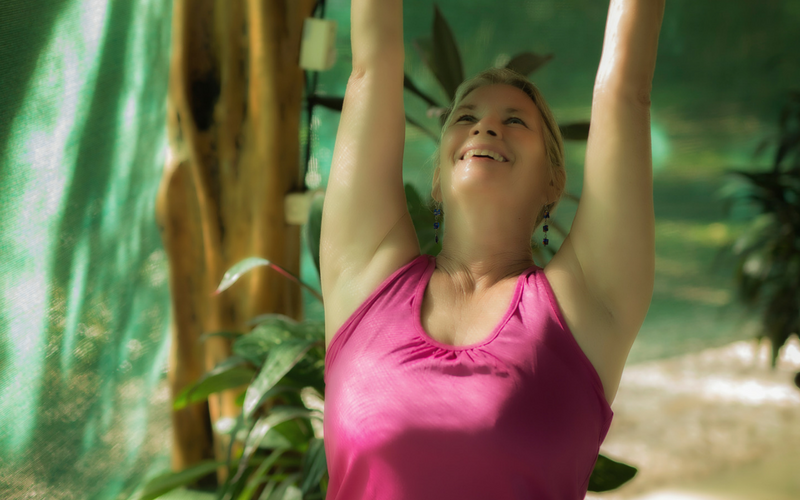
by Pete Peterson | Feb 23, 2017 | Living Your Yoga |
Now Begins the Study of Yoga
 Over 2000 years ago Patanjali wrote the Yoga Sutras, 196 short statements that are considered the source of what yoga is about. In the Sutras, Patanjali explains that classical yoga has eight limbs, the first two of these limbs being the Yamas and the Niyamas. The Yamas and Niyamas are ethical statements to guide us in our lives, very similar to moral codes found in the world’s religions. All well and good you say, yet what does this have to do with what most of us think of as yoga, you know, those crazy poses?
Over 2000 years ago Patanjali wrote the Yoga Sutras, 196 short statements that are considered the source of what yoga is about. In the Sutras, Patanjali explains that classical yoga has eight limbs, the first two of these limbs being the Yamas and the Niyamas. The Yamas and Niyamas are ethical statements to guide us in our lives, very similar to moral codes found in the world’s religions. All well and good you say, yet what does this have to do with what most of us think of as yoga, you know, those crazy poses?
What Patanjali lets us know is that in all of the eight limbs, only two of them have to do with physical activity; the asanas, or poses, and pranayama, cultivating the prana or energy of our breath. Within the Sutras, its explained that when working with all of the limbs, not just those poses, we can achieve freedom that comes with being, knowing, connecting with our true self, this being the real purpose of yoga. Without this purpose of connection, yoga becomes just another form of exercise. Yoga requires us to become mindful within the physical activity of the practice and beyond.
The Yamas and Niyamas are a great way to begin to bring something of the whole of yoga into your life.
So while many of us come into yoga by doing the poses,It is a great addition to your asana practice to take one of the Yamas or Niyamas to focus on for a while, whether it be one a day, week, month, or even a year. Here are the ten precepts:
The Yamas
- Ahimsa – compassion for all living things
- Satya – truth in thought, words, and deeds
- Asteya – not stealing
- Brahmacharya – merging your energy with spirit
- Aparigraha – generosity
The Niyamas
- Saucha – living purely
- Santosha – contentment
- Tapas – disciplined use of your energy
- Svadhyaya – Study of self
- Ishvarapranidhana – Acting from love, devotion, and good intent, and letting go of attachment to results of your actions.
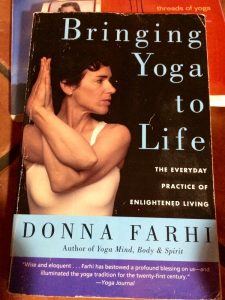 There are many interpretations of the Yamas and Niyamas. Some of my favorites are: How to Know God by Swami Prabhavananda and Christopher Isherwood, The Heart of Yoga by T.K.V. Desikachar, The Yoga Sutras of Patanjali by Edwin F. Bryant, Threads of Yoga by Matthew Remski, and most recently I have been appreciating the depth of Donna Farhi’s interpretations of the sutras, which can be found in just about any of her work (if you are not sure, begin with her book, Bringing Yoga to Life).
There are many interpretations of the Yamas and Niyamas. Some of my favorites are: How to Know God by Swami Prabhavananda and Christopher Isherwood, The Heart of Yoga by T.K.V. Desikachar, The Yoga Sutras of Patanjali by Edwin F. Bryant, Threads of Yoga by Matthew Remski, and most recently I have been appreciating the depth of Donna Farhi’s interpretations of the sutras, which can be found in just about any of her work (if you are not sure, begin with her book, Bringing Yoga to Life).
I highly encourage you to begin exploring how the Yoga Sutras can contribute to your practice of yoga, your life, and the connection to your true self. This is what the study of yoga is all about.

Namastè,
Mary

 In yoga studios, there are often guidelines which embody this Niyama, asking students to come to class clean, without any strong odors, even from perfumes, colognes, or lotions. This beginning step towards Saucha ensures that everyone can enjoy the class environment (especially the deep breathing). This is done for common courtesy, yet can also be one way to understand the intent of Saucha and to remember this as you shower or get prepared for your practice. You may also consider for yourself how you can take the spirit of Saucha in your mind as you step onto your mat, allowing yourself to try to stay absorbed in the intent of your practice, rather than thinking of the list of things you want to do after your practice.
In yoga studios, there are often guidelines which embody this Niyama, asking students to come to class clean, without any strong odors, even from perfumes, colognes, or lotions. This beginning step towards Saucha ensures that everyone can enjoy the class environment (especially the deep breathing). This is done for common courtesy, yet can also be one way to understand the intent of Saucha and to remember this as you shower or get prepared for your practice. You may also consider for yourself how you can take the spirit of Saucha in your mind as you step onto your mat, allowing yourself to try to stay absorbed in the intent of your practice, rather than thinking of the list of things you want to do after your practice. As we do in class, you can also separate your yoga practice from the rest of your day, thus keeping your practice “clean”. We do this through chanting the sacred word “Om” to begin and saying “Namaste” at the end. Finding your opening and closing rituals for your home practice can have the same impact, whether it be through lighting incense, candles, or even reading an inspirational passage before you begin. You can also find meaningful ways that work for you to close your practice, whether it be through bowing in gratitude to your inner teacher or in simply sitting in silence for a moment to allow yourself to transition off of your mat.
As we do in class, you can also separate your yoga practice from the rest of your day, thus keeping your practice “clean”. We do this through chanting the sacred word “Om” to begin and saying “Namaste” at the end. Finding your opening and closing rituals for your home practice can have the same impact, whether it be through lighting incense, candles, or even reading an inspirational passage before you begin. You can also find meaningful ways that work for you to close your practice, whether it be through bowing in gratitude to your inner teacher or in simply sitting in silence for a moment to allow yourself to transition off of your mat.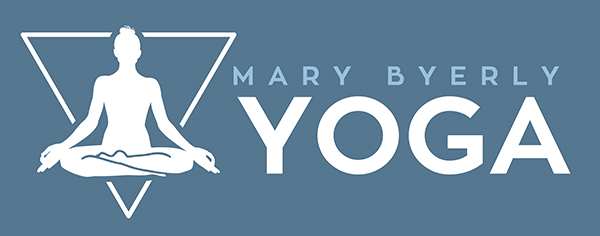









 There are many interpretations of the Yamas and Niyamas. Some of my favorites are: How to Know God by Swami Prabhavananda and Christopher Isherwood, The Heart of Yoga by T.K.V. Desikachar, The Yoga Sutras of Patanjali by Edwin F. Bryant, Threads of Yoga by Matthew Remski, and most recently I have been appreciating the depth of Donna Farhi’s interpretations of the sutras, which can be found in just about any of her work (if you are not sure, begin with her book, Bringing Yoga to Life).
There are many interpretations of the Yamas and Niyamas. Some of my favorites are: How to Know God by Swami Prabhavananda and Christopher Isherwood, The Heart of Yoga by T.K.V. Desikachar, The Yoga Sutras of Patanjali by Edwin F. Bryant, Threads of Yoga by Matthew Remski, and most recently I have been appreciating the depth of Donna Farhi’s interpretations of the sutras, which can be found in just about any of her work (if you are not sure, begin with her book, Bringing Yoga to Life).